Celebrating a whole year of Nam Chok. Still wearing her riding saddle on the day she was rescued, Nam Chok has now spent 365 days free of chains.
How Elephants’ Bodies Are Damaged by Tourist Rides
Comparison photographs of our rescue elephants show how their spines can become visibly deformed when forced to carry heavy loads of tourists as part of the wildlife entertainment industry.
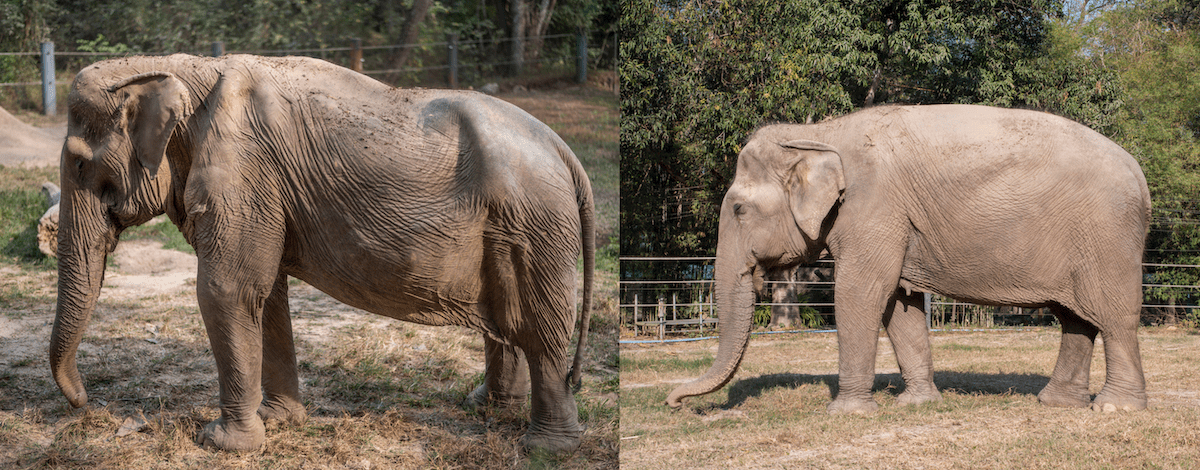
Pai Lin the elephant spent over 25 years in Thailand’s trekking industry, where she was forced to give rides for up to six tourists at a time.
She now lives with us at Wildlife Friends Foundation Thailand (WFFT), Thailand’s first chain-free elephant sanctuary, where she can roam freely and engage in her natural behaviours.
You can see how Pai Lin’s spine, which should naturally be rounded and raised, is caved in and sunken from the heavy weight of her past work. Spinal deformities in elephants can be caused by multiple combined factors, including malnutrition, and as a result of injuries sustained while working in the tourism or logging industries.
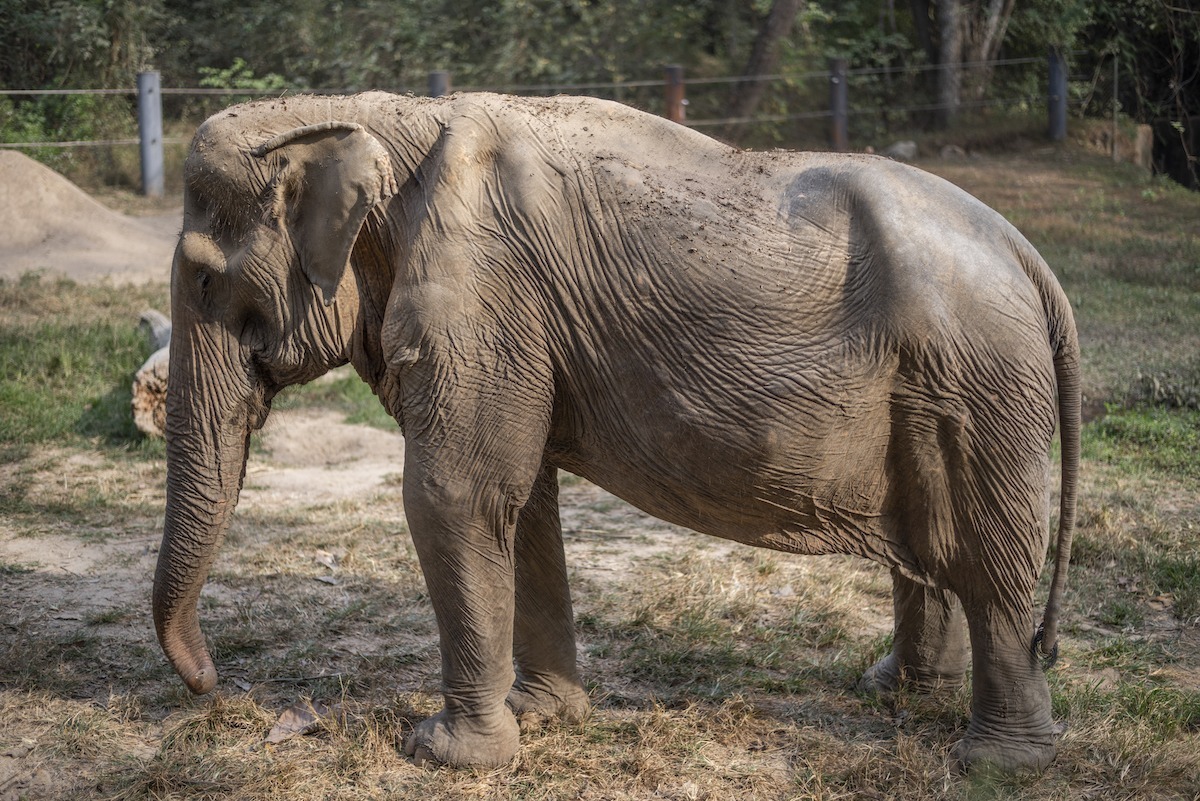
These physical deformations are common in elephants used for tourist rides, and can be seen in several of the rescue elephants who now live happily at WFFT. We’ve released these photos of our wonderful Pai Lin and her friends to help raise awareness of how these gentle giants can suffer as part of the riding industry.
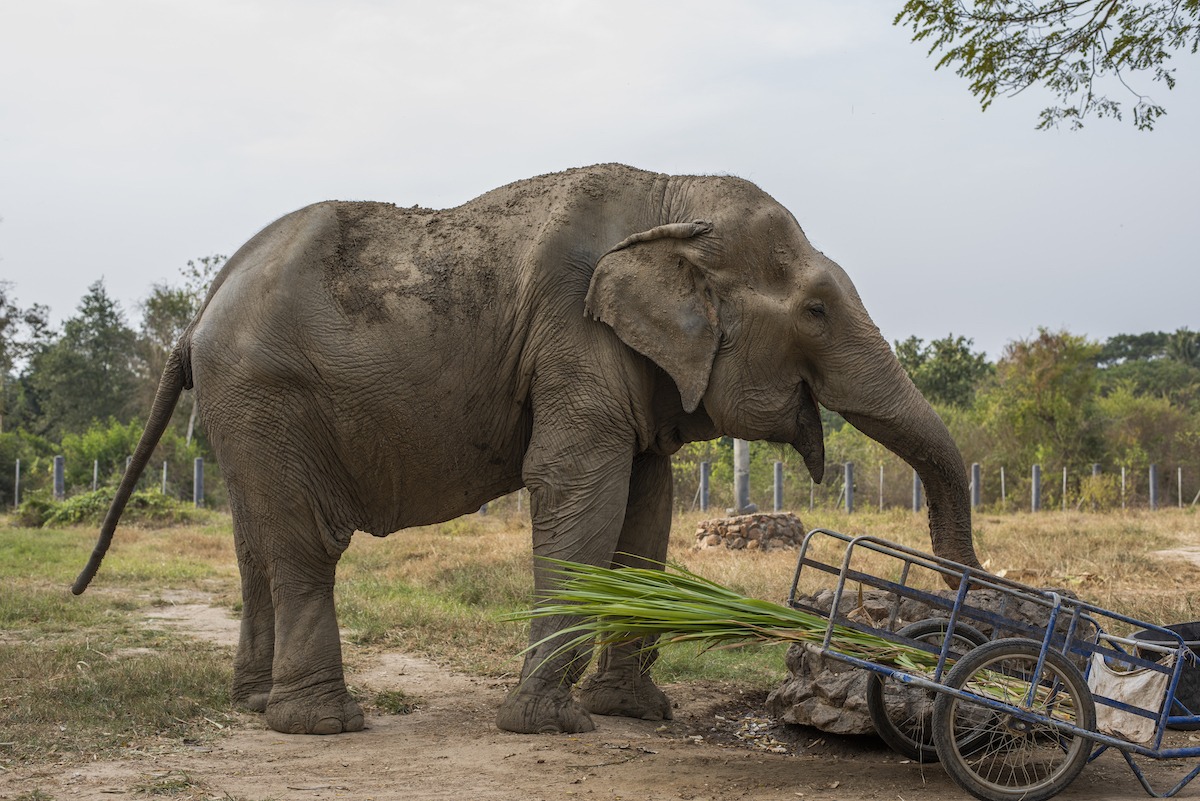
Elephants used for trekking often spend full days carrying the weight of their mahout (handler), groups of tourists, and a heavy howdah (seat). This continuous pressure on their bodies can deteriorate the tissue and bones on their back, causing irreversible physical damage to their spines. Pai Lin’s back still bears scars from old pressure points.
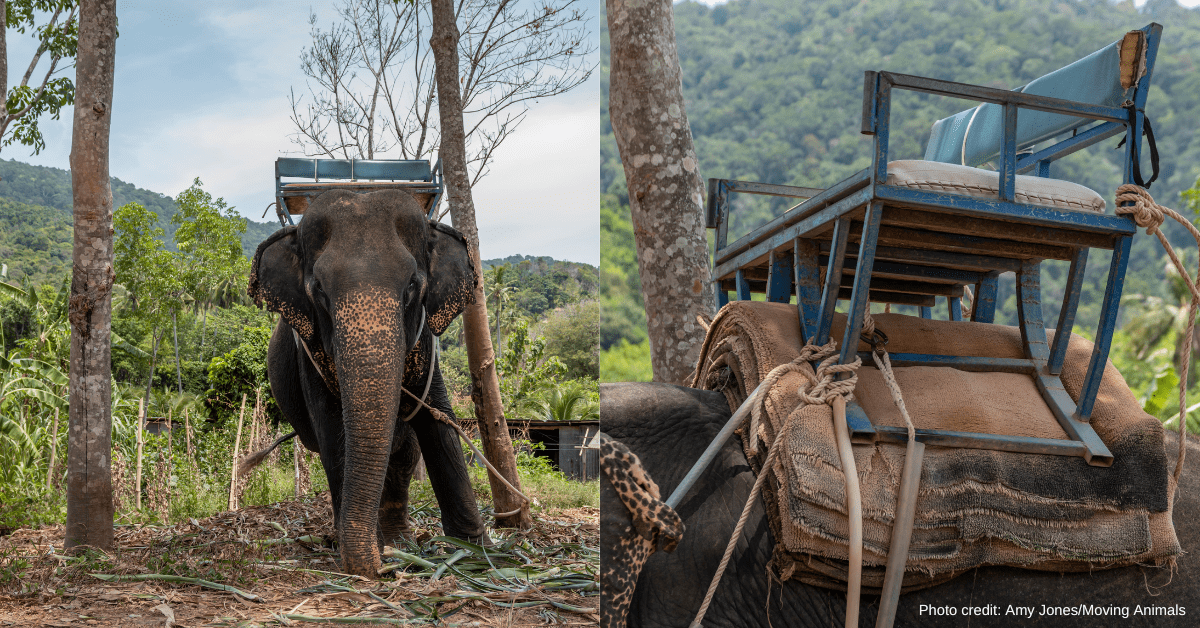
“While elephants may be known for their strength and size, their backs are not naturally designed to carry weight, as their spines extend upwards” explains Tom Taylor, our Project Director at WFFT. “Constant pressure on their backbones from tourists can result in permanent physical damage, which can be seen in our gentle Pai Lin”.
Affectionately known as the grandma of our elephant sanctuary, we rescued Pai Lin, now around 71 years old, back in 2007.
Pai Lin, along with our 22 other rescue elephants, live happily in our large elephant enclosures, which are up to 44 acres each and have natural trees, lakes and grazing areas.
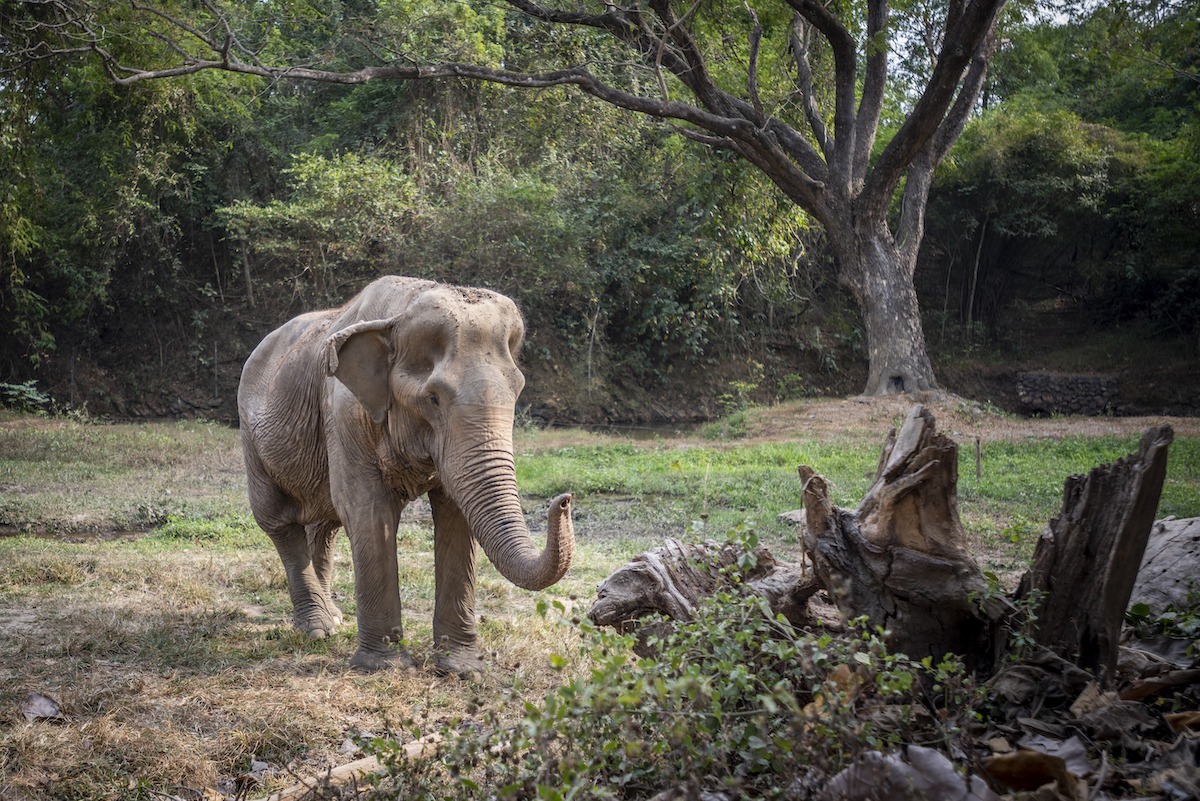
Most of the rescued elephants here at WFFT have experienced decades of abuse. While we could never comprehend the trauma these animals have experienced in the past, at least they can now live the rest of their lives in peace at our sanctuary. We hope that these photos encourage tourists to do their research and support only ethical and sustainable elephant sanctuaries, while avoiding establishments that offer riding or other exploitative practices.
The lifelong care of Pai Lin and our other elephants is only possible because of our generous supporters. Please help us continue our work to protect Thailand’s elephants by making a donation.
บริจาคได้ทันทีเพียงสแกนคิวอาร์โค้ดด้านล่าง

Our Mission
WFFT is one of South East Asia’s largest animal sanctuaries and cares for over 700 animals. The sanctuary rescues and rehabilitates captive wild animals, and offers a forever home to those who cannot safely be returned to the wild.
The charity also focuses on raising awareness of wildlife conservation and animal exploitation by educating tourists and local communities on the urgent issues facing animals today.




